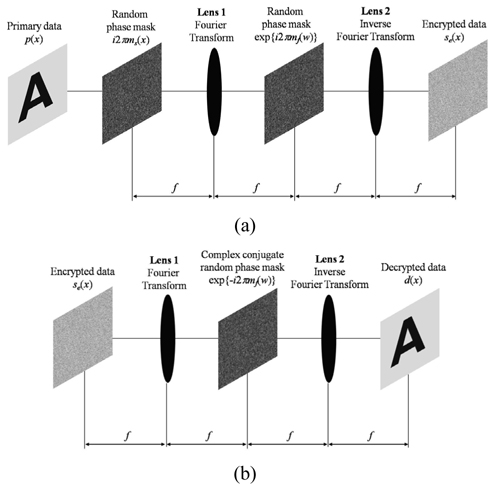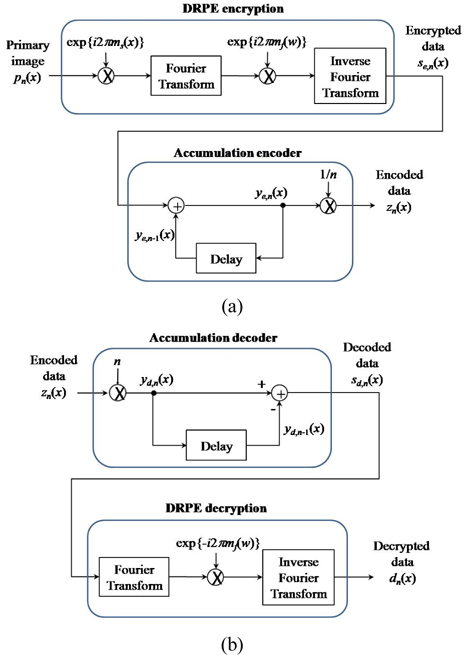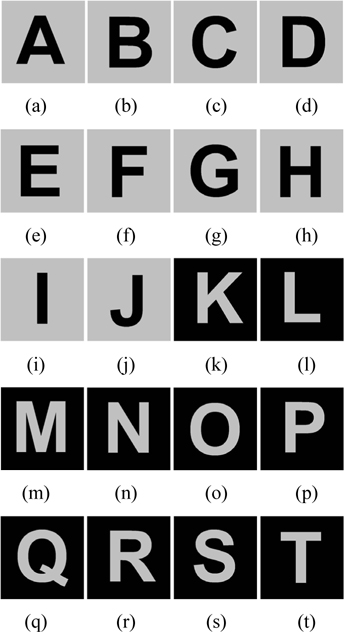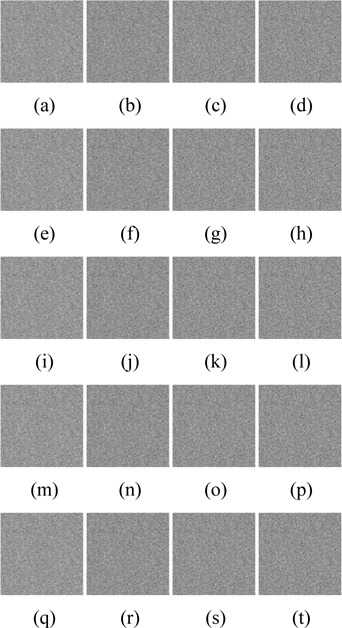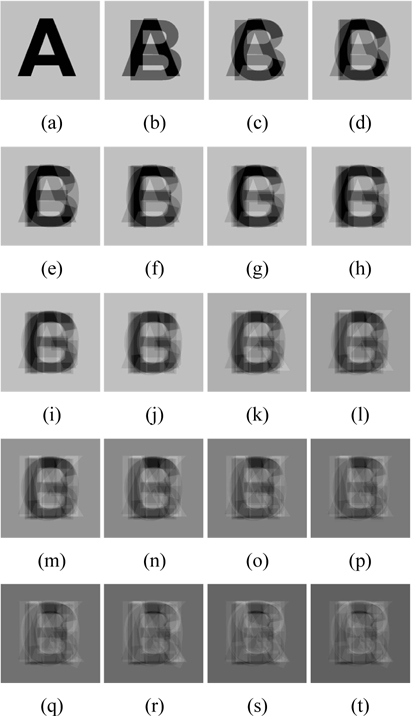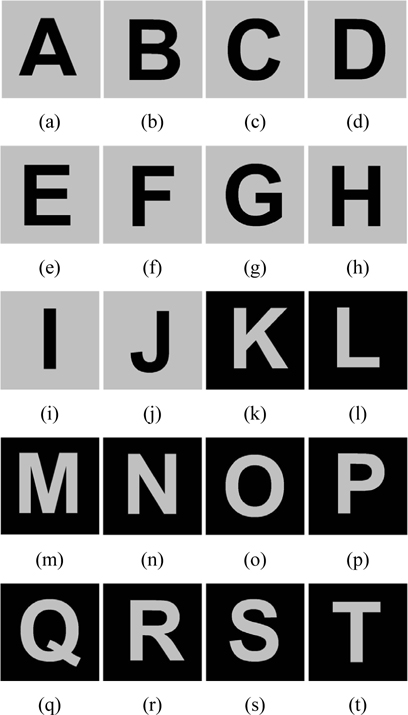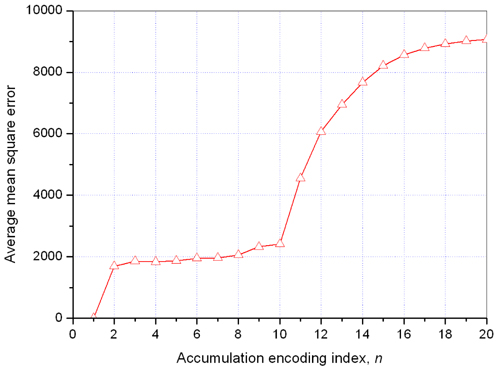



Information security is one of the most important issues in data transmission. Optical encryption has been widely investigated for information security because of its high encryption speed [1-23]. As a representative optical encryption technique, double random phase encryption (DRPE) has been well studied [1-21] and improvements have been developed, such as DRPE using the Fresnel domain [2], DRPE using a full-phase processor [3], DRPE using digital holography [4, 5], photon-counting DRPE [6, 7], and DRPE using fractional Fourier transform [8-10].
Since DRPE uses double random phase masks for encryption, a security defect can be introduced [11], so updating the phase masks is required to resolve the security problem. However, such a resolution may lead to a cost problem. Therefore, advanced DRPE techniques without phasemask updating have been introduced [8-10, 18-21]. In particular, DRPE using fractional Fourier transform has been presented [8-10] to enhance the security of DRPE systems, where security is improved by increasing the number of encryption parameters. However, DRPE systems using fractional Fourier transform can be more complicated because of many encryption parameters. Hence, DRPE using orthogonal encoding has been presented as a low-complexity DRPE system in which the orthogonal encoder contains simple linear functions [20, 21].
In this paper we propose a DRPE-based accumulation encoding scheme for multiple-image transmission. It can be considered a low-complexity DRPE scheme because of the simple structure of its accumulation encoder and decoder. In addition, data security can be enhanced by introducing accumulation encoding into DRPE. We provide a detailed method for DRPE-based accumulation encoding and decoding, and show simulation results verifying that decryption of the image encrypted by the DRPE-based accumulation encoding scheme becomes more difficult as the number of accumulated images increases, even when the phase key used in DRPE is known.
The paper is organized as follows. Section II presents the concepts behind DRPE. The DRPE-based accumulation encoding scheme for multiple-image transmission is described in Section III. To verify this optical encryption scheme, simulation results produced by DRPE using accumulation encoding are provided in Section IV. Finally, we conclude the paper in Section V.
II. DOUBLE RANDOM PHASE ENCRYPTION
DRPE, an optical encryption technique, uses double random phase masks to encrypt data. Data encrypted by DRPE look like noise. For decryption, the key random phase mask used for encryption is required. For the sake of simplicity, in this paper we consider the encryption of one-dimensional data.
Let
where ℑ−1 represent the inverse Fourier transform. Exploiting the characteristics of a complex-valued function, the encrypted data can be expressed as amplitude and phase parts, i.e.
As shown in Fig. 1(b), for decryption the encrypted data are multiplied by the complex conjugate of the key information, i.e. exp[
III. DRPE-BASED ACCUMULATION ENCODING AND DECODING
Figures 2(a) and (b) depict the schemes for DRPE-based accumulation encoding and decoding for encryption and decryption, respectively. As shown in Fig. 2(a), the
where
After accumulation encoding of the
For perfect decryption of the accumulation-encoded data, as shown in Fig. 2(b), the encoded data are multiplied by
where
The accumulation encoder and decoder require only a simple linear operation and storage to store the data with the size of a single image, as seen in Eqs. (3) and (6). Therefore, the addition of the accumulation encoder and decoder to the DRPE system requires low cost and effort.
To evaluate the performance of DRPE-based accumulation encoding we consider 20 primary images with 500(H)×500(V) pixels, as shown in Fig. 3. Figures 4(a)-(t) show the simulated results of DRPE-based accumulation encoding, meaning
To quantify the differences between the primary images in Figs. 3(a)-(t) and the decrypted images without decoding in Figs. 5(a)-(t) respectively, mean square error (MSE) results are calculated, as shown in Fig. 7, where we assume that the image pixel values are integers ranging from 0 to 255. In Fig. 7 the average MSE for the
When no decoding is used, the
We propose a DRPE-based accumulation encoding technique for multiple-image transmission. In particular, we present the schemes for encryption and decryption for DRPE-based accumulation encoding and decoding, respectively, and methods for accumulation encoding and decoding. The simulation results verify that DRPE-based accumulation encoding for multiple-image transmission can enhance the security of DRPE-encrypted data when the key information of DRPE is perfectly known in decryption. Furthermore, since the accumulation encoder and decoder require only a simple linear operation and enough storage to hold a dataset of a single image, the DRPE system with accumulation encoding can be implemented with little cost and effort.
